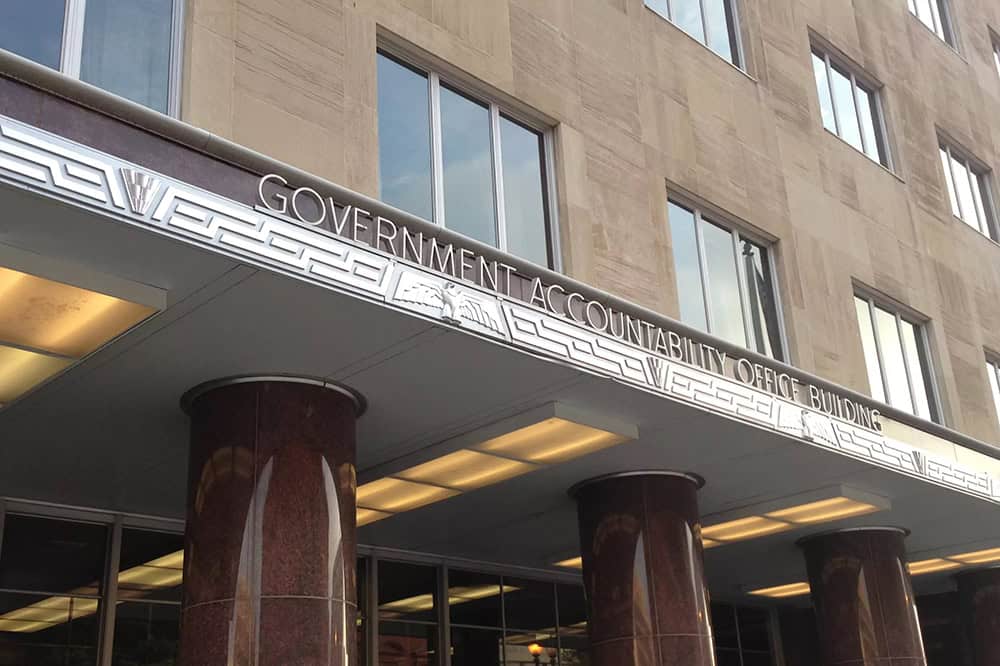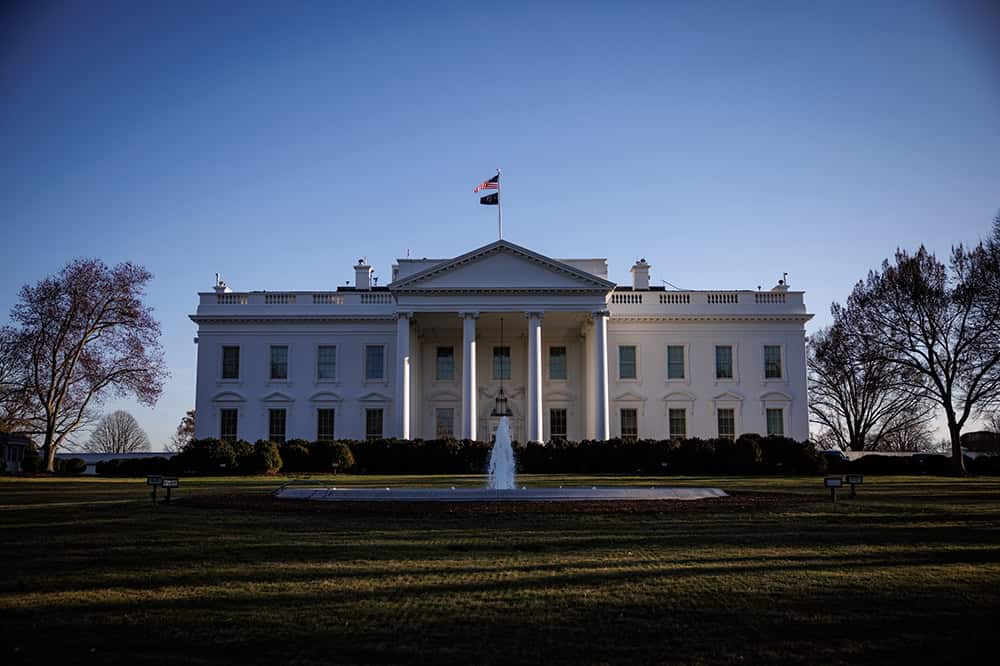How Fixing the Appropriation Process Can Help Avoid a Shutdown
Last Updated November 16, 2023
The last time Congress passed all appropriation bills on time was for fiscal year 1997, 27 years ago. Delays in passing appropriation bills lead to wasteful spending, inefficient government, lower productivity of workers, inability for agencies to plan, and potential harm to the economy. How can we improve this important process?
How the Appropriation Process Works
An appropriation is “a statutory provision that provides budget authority, thus permitting a federal agency to enter into financial agreements that will obligate the Treasury to make payments.” Such funding generally covers the operations of agencies, including salaries and benefits for federal employees, grants to state and local governments, and purchases from the private sector.
Since the First Congress in 1789, appropriations have occurred on an annual basis, though funding included in them sometimes covers multiple years. Currently, the Committee on Appropriations in both the House and Senate develops legislation via 12 subcommittees — each of which is supposed to draft a bill annually.
If Congress does not pass the 12 appropriation bills before the beginning of a fiscal year on October 1, some government activities will shut down. Congress can pass continuing resolutions (CRs), which provide temporary funding for an established timeframe, to prevent a shutdown, but those stopgap measures essentially continue the previous year’s funding levels and priorities.
Evidence that the Appropriation Process is Broken
Many aspects of the current appropriation process are not working effectively. Both the threat of shutdowns and the use of CRs are common, which indicates the failure of the current process:
- There have been 20 funding gaps (when funds were not appropriated for one day or more) and four government shutdowns (in which agencies were closed for 4 or more business days) since 1976.
- Since 1977, Congress has passed all appropriation bills before the start of the fiscal year only four times, with the most recent time being 1997.
- On average, over the past 26 years, the appropriation process was completed (meaning all bills were enacted) four and a half months into the fiscal year.
- Lawmakers utilized 131 CRs between FY1998 and FY2023 (an average of five CRs each fiscal year).
What Happens When the Appropriation Process Is Not Finished on Time
When the appropriation process is not completed on time, either a CR is put in place or a government shutdown would occur. Why does that matter? Either approach can generate adverse effects on the operations of the federal government and the nation’s economy, including:
- Interrupted government activities. When there is no budget or CR in place and the new fiscal year is looming, government agencies are forced to update contingency plans to outline how they will carry out a shutdown, if necessary. The time spent on such plans is time that is not devoted to carrying out the mission of the agency. In addition, the uncertainty about future funding inhibits adequate planning; for example, transportation, housing, or development agencies are less likely to take on a new infrastructure project before knowing future funding streams for the following year that would be necessary to complete the project.
- Discourages proper governance. In addition, short-term CRs generally continue funding at the previous year’s level, which prevents the assessment of programs to determine if they merit continuation. If lawmakers do not critically assess the true needs for funding of federal agencies, the allocation of resources could be skewed towards past needs rather than current needs.
- Harm to federal workers. If appropriation bills have not been enacted and no CR is in place, a shutdown of many government activities would occur. Workers for agencies influenced by a shutdown cannot carry out their responsibilities and generally do not receive pay for the duration of the shutdown. However, existing law requires workers to be paid when a shutdown ends — meaning no value is created for the money ultimately paid to workers.
- Potential economic harm. Government shutdowns have the potential to increase the unemployment rate, lower the growth in gross domestic product, and raise the cost of borrowing. Though a short shutdown would not significantly influence the economic benchmarks, any influence is unnecessary. A shutdown can also disrupt loan programs or the issuance of certifications or approvals for certain business types.
Solutions to Reform the Appropriation Process
A number of policymakers have proposed ideas to reform the appropriation process. Those ideas include:
Biennial Budgeting
The Constitution requires appropriations, but does not stipulate how often. The Brookings Institution recommends moving to a biennial budget process, which would legislate appropriations every two years rather than annually. The move would require that a budget and all appropriation bills be adopted in the first session of odd-numbered years of Congress. The hope is that it would leave even-numbered years for oversight. The think tank believes that biennial budgeting would improve government efficiency by decreasing the number of target dates that Congress misses and, in theory, free up time for review of existing activities, authorization of new programs, and consideration of longer-term budget outcomes.
The Bipartisan Policy Center (BPC) echoed the sentiment for biennial budgeting in a 2015 plan written by Pete Domenici and Alice Rivlin, who were a part of the well-respected Debt Reduction Task Force in 2010. The authors also noted that emergency and supplemental appropriations could occur in either session, as needed. Others recommend a non-election year process in conjunction with a biennial budget process to encourage bipartisan budget negotiations and eliminate heightened pressure from interest groups during a campaign season.
Permanent Appropriations
Another approach, posed by Andrew Taylor, professor of political science at North Carolina State University, in the American Enterprise Institute’s (AEI) journal National Affairs is to move from an annual to a permanent appropriation process, meaning the Treasury would provide funds each year for a program unless legislation is passed to alter that budget area’s allotment. If a bill does not pass in Congress in a particular year, spending would continue at current levels. Taylor argues that permanent appropriations are a viable reform option as they would eliminate the threat of a government shutdown, decrease spending compared to annual appropriations, and encourage strategic budgeting by eliminating “use it or lose it” mentalities for agencies at the end of a fiscal year.
Require Congressional Committees to Review Unauthorized Appropriations
Authorizations establish or modify a federal program and are either permanent or last for a duration of time. Appropriations provide funding to agencies to administer programs. When the duration of time given in an authorization has passed, an appropriation is considered “expired” or “unauthorized.”
Current rules prevent the House and Senate from considering expiring or unauthorized appropriations if a Member raises a point of order; otherwise, unauthorized appropriations can continue through the legislative process. The Cato Institute contends that the process usurps the normal, two-part budget process that prompts evaluation of whether a program accomplished its intended purposes and may mean some programs continue to receive funding beyond their useful life.
BPC recommends that committees be required to review unauthorized appropriations and include them in the “views and estimates” to consider the programs’ influence on the debt and, ultimately, to discourage growth in the deficit and national debt. A recent Congressional Budget Office report found that 1,108 appropriations expired before the beginning of FY2023, and 355 authorizations are expiring before the end of FY2023. CBO estimates that just 428 of the expired authorizations of appropriations total $510 billion.
Prohibit Congressional Recess Until a Budget Plan is Put in Place
The Budget Act sets April 15 as a statutory deadline for Congress to adopt a budget resolution, though that deadline is usually not met. The budget resolution sets topline targets for appropriations, typically over a 10-year period. If no budget resolution is passed, the resolution from the prior year may continue in place and other legislative action must occur for appropriators to do their work (such as “deeming resolutions” or statutory provisions). Next, Congress considers the 12 appropriation bills, with a deadline of October 1, which is the start of the new fiscal year. The Committee for a Responsible Federal Budget recommends that Congress be prohibited from going on recess or considering other matters until a budget resolution is passed.
Institute Caps on Spending
Since the Budget Enforcement Act (BEA) first established budget caps on discretionary spending in 1991, all appropriations have only passed by the beginning of the fiscal year in years when caps were in place. Also, in years when budget caps were in place, discretionary spending grew at lower rates than in non-cap periods. In 2010, the Bowles-Simpson plan proposed restraining discretionary spending via caps and “enforcement mechanisms to give the limits real teeth.” Various commissions and voices — such as The Domenici-Rivlin Task Force, BPC, The Peterson-Pew Commission, and Brian Riedl of the Manhattan Institute — have echoed the call for statutory caps. Brian Riedl encourages caps to be flexible but relatively unbreakable and set at realistic levels, making them less likely to be evaded. The Fiscal Responsibility Act of 2023 instituted caps on discretionary funding, but only for fiscal years 2024 and 2025. Reforming the appropriation process by instituting lasting caps could control the growth of U.S. debt and provide guidance for the future.
Give Lawmakers a Bonus if Congress Completes the Appropriation Process by October 1
Leonard E. Burman, co-founder of the Tax Policy Center and Institute Fellow at the Urban Institute, proposes a monetary bonus for Congress if all appropriation bills pass before October 1. If Congress were not successful, the incentive would cost nothing. Nevertheless, according to Burman, “If the bonus nudged Congress to do its job, it would be a bargain.” Passing all appropriation bills by October 1 would prevent a government shutdown and free up more of Congress’ time to focus on strategic solutions to improve America’s fiscal future.
Conclusion
There is no question that the appropriation process is broken, with lawmakers consistently missing deadlines and often resorting to the less-than-ideal outcomes of continuing resolutions or government shutdowns. Reforming the process to better incentivize and even require on-time budgeting could have meaningful benefits for the functioning of our government, the productivity of workers, and the health of the economy. Nevertheless, it is important to remember that making the appropriation process more effective is just one aspect of necessary budget reform that policymakers should be working for in the United States.
Image credit: Photo by Mario Tama/Getty Images
Further Reading
How Much Can the Administration Really Save by Cutting Down on Improper Payments?
Cutting down on improper payments could increase program efficiency, bolster Americans’ confidence in their government, and safeguard taxpayer dollars.
How Do Quantitative Easing and Tightening Affect the Federal Budget?
The Federal Reserve plays an important role in stabilizing the country’s economy.
Can a Rescissions Package Help Lawmakers Formalize DOGE Cuts?
Rescission packages can serve as a tool for the President and Congress to manage and control government spending through a formal statutory process.


